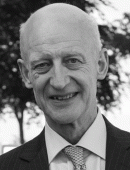2020 Journal Issues September 1, 2020


Guest Editors


Special Issue Papers
By M. Chertkov and G. Andersson
By E. A. Martínez Ceseña, E. Loukarakis, N. Good, and P. Mancarella
This article is a tutorial on modeling and simulations of a multienergy system containing a portfolio of integrated electricity and gas distribution and district heating subsystems.
By W. Huang, N. Zhang, Y. Cheng, J. Yang, Y. Wang, and C. Kang
This article gives a review of standardized modeling and analysis of multienergy networks from the perspective of planning and operation, especially under low carbon circumstances.
By M. J. O’Malley, M. B. Anwar, S. Heinen, T. Kober, J. McCalley, M. McPherson, M. Muratori, A. Orths, M. Ruth, T. J. Schmidt, and A. Tuohy
This article provides a review of multienergy systems in the context of future low carbon energy systems based on electrification and very high variable renewable energy penetrations.
By A. Hassan, S. Acharya, M. Chertkov, D. Deka, and Y. Dvorkin
This article describes a modeling framework based on Markov decision processes to parameterize and model multienergy dynamics in dispatch tools.
By S. Geng, M. Vrakopoulou, and I. A. Hiskens
This article poses and describes an algorithmic solution for day ahead scheduling of energy resources with uncertainty resolving recourse.
By G. Chicco, S. Riaz, A. Mazza, and P. Mancarella
This article presents a comprehensive overview for distributed multienergy modeling and characterization for flexibility applications.
By L. A. Roald, K. Sundar, A. Zlotnik, S. Misra, and G. Andersson
This article offers a modern optimization perspective on the benefits of co-optimizing gas and electricity network operations in systems with a comparable penetration of renewables and gas-fired power plants.
By A. J. Conejo, S. Chen, and G. E. Constante
This article discusses history and optimization approaches to long-term planning of interdependent but independently operated natural-gas and power systems.
By S. Misra, M. Vuffray, and A. Zlotnik
This article demonstrates how multienergy systems have triggered fundamental research regarding flows of commodities in general networks.
By A. J. Osiadacz and M. Chaczykowski
This article explains new challenges in modeling and operations of the gas distribution systems associated with increased opportunities in gas-to-power activities at the distribution level.
By N. N. Novitsky, Z. I. Shalaginova, A. A. Alekseev, V. V. Tokarev, O. A. Grebneva, A. V. Lutsenko, O. V. Vanteeva, E. A. Mikhailovsky, R. Pop, P. Vorobev, and M. Chertkov
This article reviews modern district heating systems, with the main emphasis on the new challenges in modeling, operation, and planning.
By E. Guelpa, L. Bellando, A. Giordano, and V. Verda
This article reports studies on new opportunities in power- to-heat technology, taking advantage of the incidental access and unbalances of electricity due to integration of renewables.
By J. S. MacDonald, E. Vrettos, and D. S. Callaway
This article is devoted to the data-driven analysis of utiliza- tion of the demand response resources at the distribution level.
By A. Stuhlmacher and J. L. Mathieu
This article demonstrates how water pumping in drinking water distribution networks can be treated as a flexible load in the power distribution network.
By L. Duchesne, E. Karangelos, and L. Wehenkel
This article reviews opportunities and challenges in adapting and developing machine learning methodology and tools for studies in bulk power systems as well as in other distribution, microgrids, and multienergy systems.